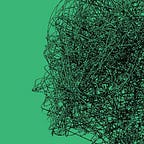NVIDIA Reveals Next-Gen Turing GPU Architecture: NVIDIA Doubles-Down on Ray Tracing, GDDR6, & More
at NVIDIA’s SIGGRAPH 2018 keynote presentation, company CEO Jensen Huang formally unveiled the company’s much awaited (and much rumored) Turing GPU architecture.
Now anyone can train Imagenet in 18 minutes
A team of fast.ai alum Andrew Shaw, DIU researcher Yaroslav Bulatov, and I have managed to train Imagenet to 93% accuracy in just 18 minutes, using 16 public AWS cloud instances, each with 8 NVIDIA V100 GPUs, running the fastai and PyTorch libraries.
Face Off: Law Enforcement Use of Face Recognition Technology
This white paper takes a broad look at the problems with law enforcement use of face recognition technology in the United States.
Holding law-enforcement accountable for electronic surveillance
CSAIL system encourages government transparency using cryptography on a public log of wiretap requests.
Rethinking Fast and Slow in Data Science
How to make data science experiments agile
TensorFlow 1.9 Officially Supports the Raspberry Pi
Thanks to a collaboration with the Raspberry Pi Foundation, we’re now happy to say that the latest 1.9 release of TensorFlow can be installed from pre-built binaries using Python’s pip package system!
Self Driving Car Learns Online and On-board on Raspberry Pi 3
Using a stock RC car model, we equipped it with a Raspberry Pi 3 along with an Arduino to control the servos/speed controller. We used the latest iteration of our online learning software, EOgmaNeo, to provide the brains of the car.
In search of decentralized data markets
Here are some introductory notes about smart contracts and related technology leading toward decentralized data markets.
Neural Style Transfer: Creating Art with Deep Learning using tf.keras and eager execution
In this tutorial, we will learn how to use deep learning to compose images in the style of another image (ever wish you could paint like Picasso or Van Gogh?). This is known as neural style transfer! This is a technique outlined in Leon A. Gatys’ paper, A Neural Algorithm of Artistic Style, which is a great read, and you should definitely check it out.
Machine-Generated Knowledge Bases
Human-generated knowledge bases like Wikipedia have a recall problem. First, there are the articles that should be there but are entirely missing. The unknown unknowns. To solve the recall problem of human-generated knowledge bases, we need to superpower the humans.
Auto-Keras
Auto-Keras is an open source software library for automated machine learning (AutoML). It is developed by DATA Lab at Texas A&M University and community contributors. The ultimate goal of AutoML is to provide easily accessible deep learning tools to domain experts with limited data science or machine learning background. Auto-Keras provides functions to automatically search for architecture and hyperparameters of deep learning models.
